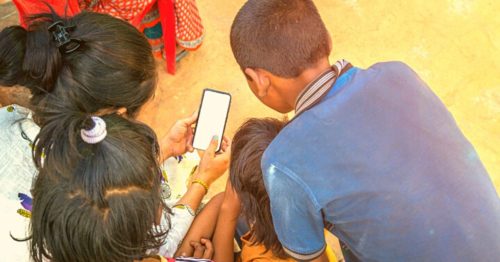The speedy nationwide lockdown has changed our lives overnight. Learning has not ceased though physical learning centres have. Though the distance learning was introduced in 1962 in Delhi, its prominent usage was adopted due to lockdown.
Online education is booming in current times, aided with internet facilities. The low-cost and flexible timings has not restricted online learning to just colleges and universities but also nursery and primary schooling.
Indian online learning was comprised of 1.6 million users in 2016 and it is expected to witness a growth of about 9.6 million users in 2021. Utilising educational technology up to this point has given rise to many opportunities of restructuring the educational system to extend the environment beyond the four walled classroom.
As online learning is rapidly evolving, its main key drivers towards the growth according to AURUM, a survey reveals that parents spend around 36,000 rupees in government school for six years, and 3, 96,000 rupees in private schools.
If the kids are studying in boarding, the cost is close to 18 lakhs. The graduation and post-graduation degrees in engineering, medicine, science and commerce are unusually expensive (Reports AURUM) whereas online educators can reach a wide audience with lower cost infrastructure and almost no administrative costs for books or uniform.
Large faction of Indian population is young, thus enlarging the target population for online education. Nearly 46 per cent of the population is between the years 15-40. Young population with higher aspirations but lower income is a good target and acceptability of online channel is also higher amongst the younger generation.
It also teaches the children good time management and enhances their digital experience with frequent assignments. It allows teachers to monitor the student’s performance and helps students in their own pace.
Also, digital friendly government initiatives and schemes like DIKSHA. The Ministry of Education has launched DIKSHA Portal to provide all teachers across nation with advanced digital technology and eBASTA project has been created as part of the government’s digital India initiative to make school books accessible in digital form as e-books.
With the continuation of lockdown, the educational system is also bound to change. Education institutes have updated their curriculum methods to a more blended way of learning. The new ways of assignments and delivery in knowledge have also added to the change.
There have been new opportunities like collaborative learning amongst teachers across the world and have increased pedagogy. With the curriculum rapidly changing, it becomes more challenging as well.
While the government has been making efforts to create and improve a digital infrastructure, there hasn’t been a great achievement. In India only 15 out of 100 households have access to the Internet, and mobile broadband remains for the advantaged few, with only 5.5 subscriptions for every 100 people, leaving rural areas with poor connectivity.
In traditional classrooms, the student-teacher and peer-to-peer engagement is very high. Learners can approach the instructors and fellow students for feedback or discussions, and get their concerns addressed on-the-spot. Online learning is yet not developed to have crowd learning, unless the courses are live with the help of an online instructor.
India is a multi-linguistic country, and a majority of the population comes from non-urban areas. The online courses mostly focus on English content. Hence, non-English speaking students struggle with the availability of content.
Online courses are self-paced learning. There is minimum or negligible motivation due to lack of face-to-face interaction. Therefore, the completion rate of online courses is very low.
E-learning providers will develop peer-to-peer model to establish collaborative learning between students through notes and idea sharing on a common platform. Technology such as artificial intelligence, big data, data analytics, facial recognition, etc., will be used to offer profile-based customized courses.
Hence educational institutes must continue teaching in classrooms maintaining physical distancing norms and following other precautions until integration of online learning. India must develop strategies to ensure that all students have access to this blended learning. It must include individuals from all backgrounds even from remote areas, underprivileged and weaker sections of the society as education is the right for all.
A more social and incentive way of teaching and learning will enhance user engagement and knowledge acquisition. Quality of different programmes and courses with flexibility of availability in local languages will result in rapid growth.
Covid-19 however has immensely challenged the educational sector across the world in general and India in particular.
India has to fully equip the educational sector to reach to every nook and corner of the country, although the government and other institutes are relentlessly trying to cope up. It is therefore the need of the hour to utilise the technology expediently.
Source:http://risingkashmir.com/

